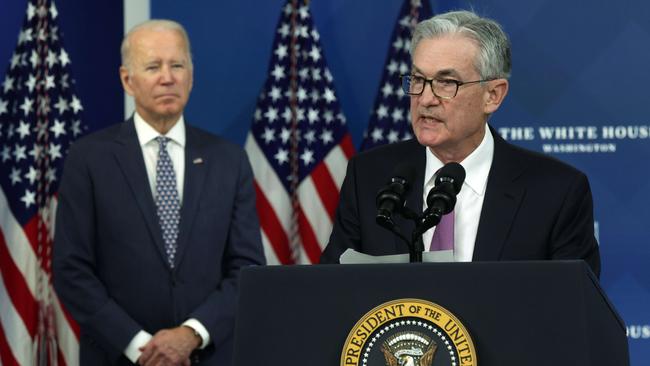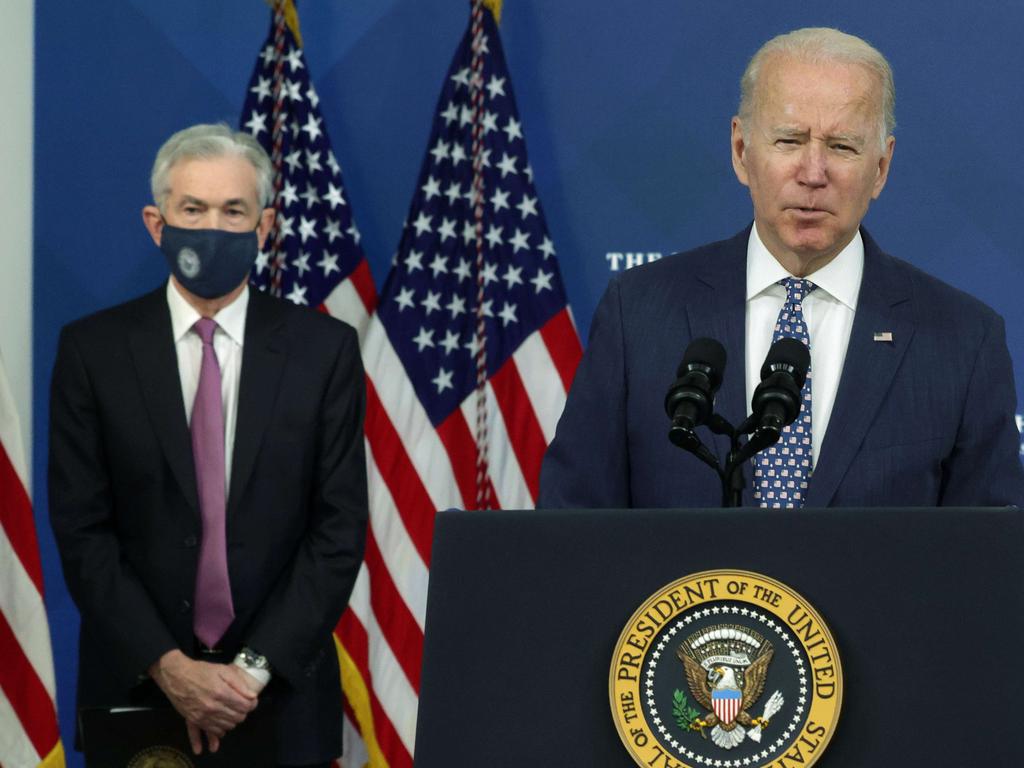Jerome Powell a steady hand but should tighten faster: Carl Tannenbaum
Renominated US Fed chair Jerome Powell has done a solid job but should be tightening faster, according to economist Carl Tannenbaum.

Financial markets will appreciate the steady hand of Jerome Powell in a challenging transition to living with Covid-19, less policy stimulus and de-globalisation, but he should be tightening faster according to Carl Tannenbaum.
US stocks slipped on Monday as bond yields rose, but the chief economist of Northern Trust – a former Federal Reserve Bank of Chicago official who once served as the head of the entire Federal Reserve’s Risk Group in Washington – says Powell was a “very easy choice”.
“We have just initiated Fed tapering (of US bond buying) and I think changing leadership of the Fed might have given the market a sense that somehow the pattern of policy might be different at a time when we have some important transitions going on in the economy,” he said.
The S&P 500 retreated from a record high and the Australian dollar hit a two-month low as the 10-year Treasury bond yield jumped 8 basis points to 1.6236 per cent after US President Biden belatedly confirmed his widely expected reappointment of Mr Powell as Fed chair.
Australia’s S&P/ASX 200 rose 0.8 per cent to a five-day high of 7410.6 points as iron ore futures surged 10 per cent after China’s latest monetary policy report fuelled hopes of easing measures.
Mr Powell was perceived by some analysts as more likely to lift US interest rates faster than Mr Biden’s other main candidate – Lael Brainard – who was elevated to vice chair of the Fed.
“The market was also cognisant of a potential over-reaction if a more progressive candidate like Lael Brainard had been chosen,” Mr Tannenbaum added.
“Inflation is high here and while most of this is expected to come down, if monetary policy remains overly generous, the inflation risk is higher.”
The reappointment of Mr Powell will avoid delays that might have occurred with the Senate confirmation of another candidate, according to Mr Tannenbaum.
But he said that while Mr Powell has done a very solid job in his four years as Chairman, Mr Tannenbaum said US monetary policy probably should be “tightened up a little faster than it is.”
He thinks the Fed should taper faster than the $US15bn ($21bn) a month plan which will unwind the current $120bn a month program by mid-2022. But that remains unlikely in his view.
“When the Fed started tapering in 2014, they wanted the program to be on a preset course, rather than wondering from one month to the next how active the Fed was going to be in buying securities,” he said. “This ‘no surprises’ policy was designed to avoid any new ‘taper tantrums’.
As former Fed chair and current Treasury Secretary Janet Yellen said when she was leaving the Fed, it should go on “autopilot” when tapering and it should be like “watching paint dry.”
In the same way, Mr Tannenbaum says the “bar” to the Fed changing the pace of tapering is “high” because the central bank will want to limit volatility that might be caused by such a change.
But the Fed is “behind the curve” on inflation, partly because it’s fighting the last war over again.”
He notes that the current recovery has been much faster than that which followed the GFC.
“Covid-19 saw very sudden, sharp and unprecedented declines, but by the end of 2020, the recovery was 60 or 70 per cent complete, and depending on the metric you use, it’s now 90 to 100 per cent complete, and yet the Fed was still, up until this month, operating at full throttle,” he said.
In his view, the pattern of economic policy needs to match the economic circumstances.
“I don’t think that’s been the case this time,” Mr Tannenbaum said.
Evidence of excess liquidity is “everywhere” with pent up savings on household balance sheets, cash on corporation’s balance sheets, and deposits which US banks hold with the Fed, all “immense”.
“US banks do have the opportunity of putting excess liquidity back to the Fed through a reverse repurchase program, which on a daily basis has been attracting well over 1 trillion dollars,” he said.
“So if you want to think of it in simple terms, that’s money that the Fed puts out into the system, that does a rapid round trip, and does very little for credit or economic activity.”
“We are in a liquidity trap.”
He sees a flatter year for the share market in 2022, but the good news for investors is that US corporations currently have more pricing power than they have in decades.
“The reason is, consumers are willing to pay,” he said.
Americans are flush and keen to make up for a sparse holiday season in 2020, so despite supply-chain interruptions, he says they’re now happy to pay higher shipping surcharges and costs for goods.
“So companies, either by surcharges or their regular pricing channels, are passing along the higher costs of inputs, labour and shipping to their customers and you’re seeing this in the fact that inflation expectations across countries are much higher than they were six months ago,” he said.
The danger is that if they don’t return to work enough, wages growth will continue to accelerate.
“It’s different from place to place and it’s important to note that counties that had furlough schemes like Australia’s JobKeeper program that kept their workers in closer ties with their companies are not seeing the same level of wage escalation than, certainly, we are here in the United States.”
He says the pandemic actually created a “divorce” between many American workers and the companies they worked for, as well as the industries and geographies in which they worked.
These things are “complicating” the matching of workers to jobs now that the economy is reopening.
With job openings and turnover both at record levels “workers have leverage in this country that I have not seen in a very long time … they’re asking for wage increases and getting them.”
“I’m not suggesting that it’s an unstoppable process, but we’re starting to see the formation of a wage-price spiral and once that gets entrenched, it’s hard to unearth.”





To join the conversation, please log in. Don't have an account? Register
Join the conversation, you are commenting as Logout